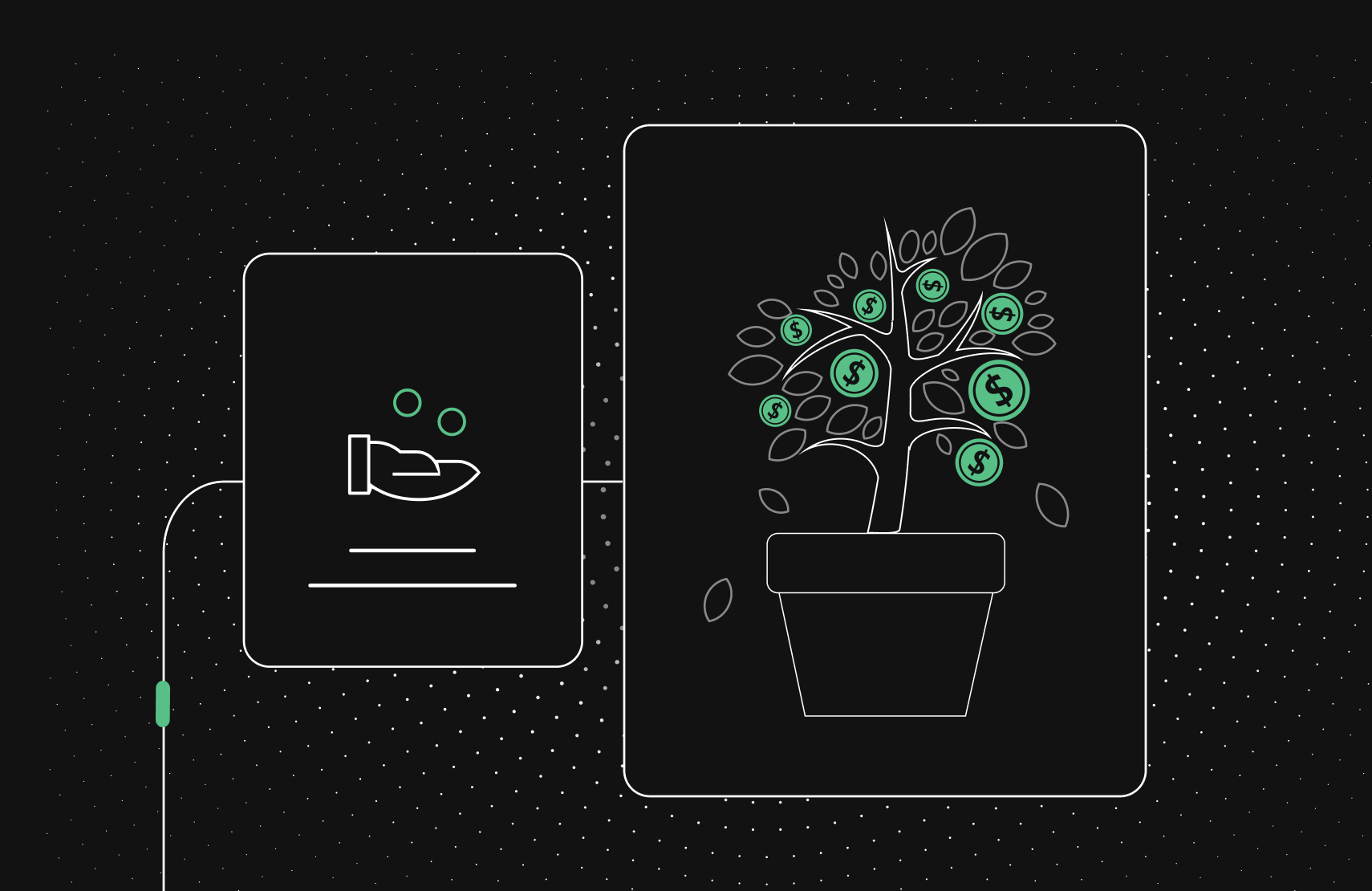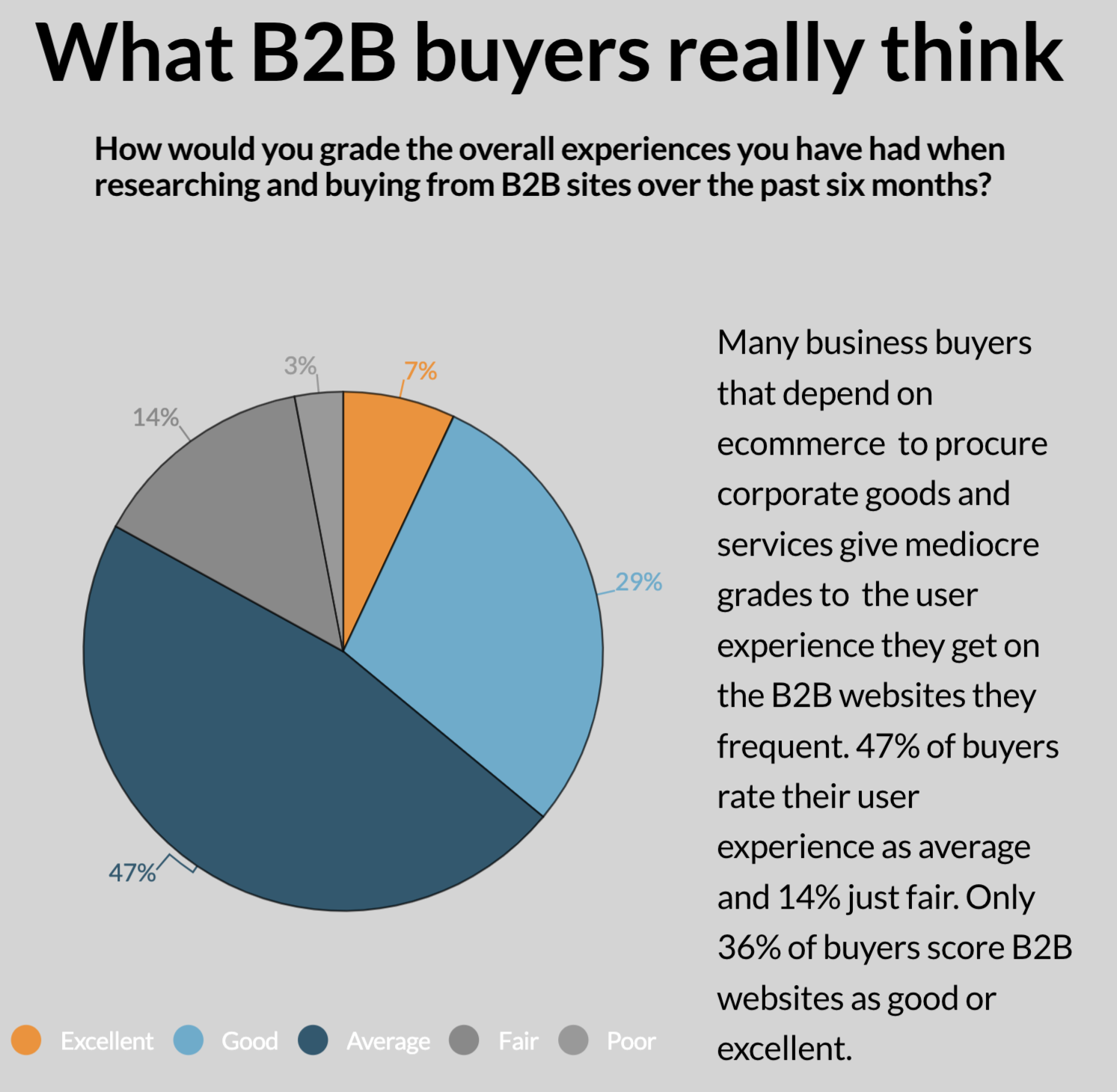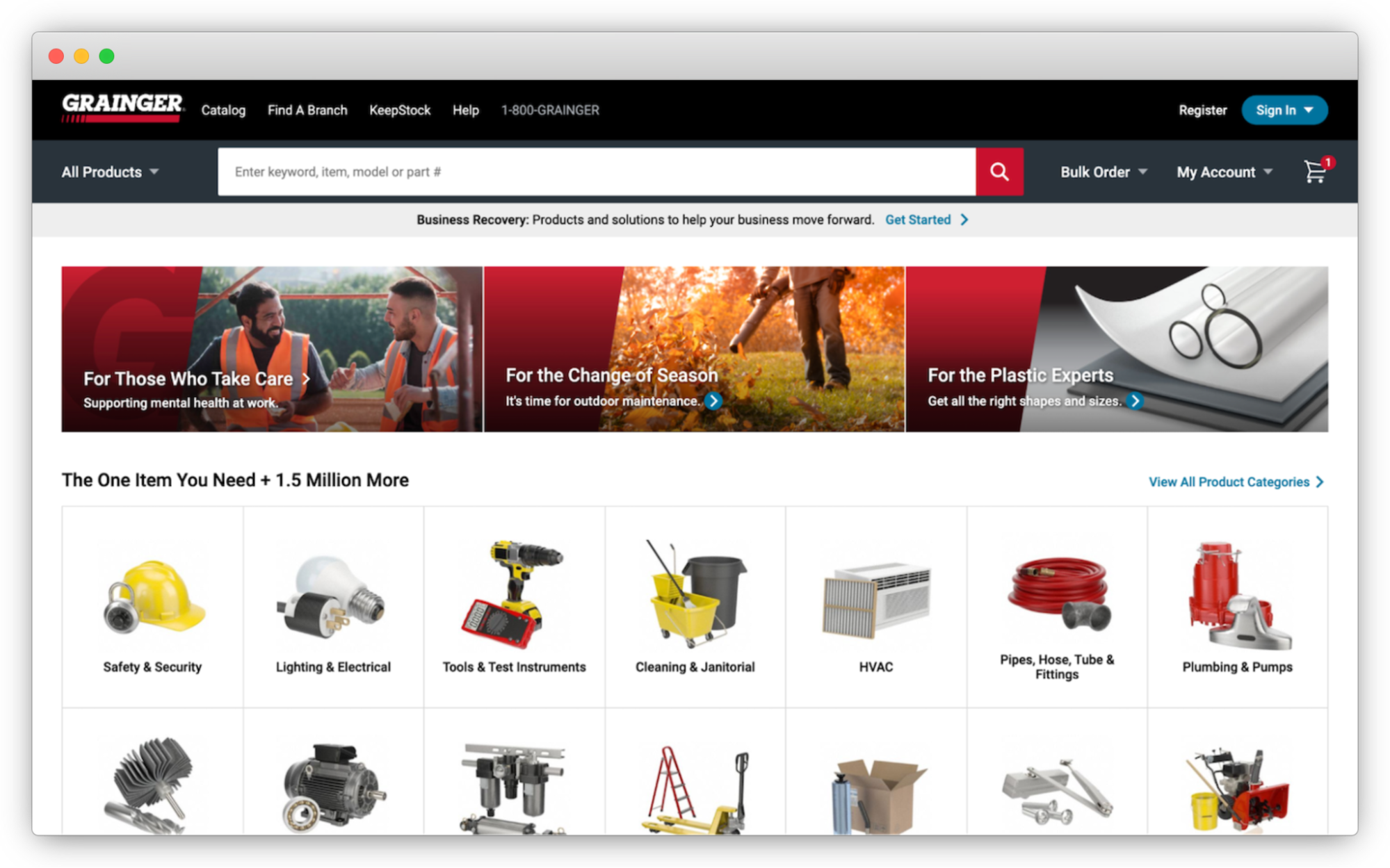Stealing from B2C for B2B E-Commerce Success: Part 8 of 8

B2C e-commerce has set the standard for user experiences, but B2B is far behind, as only 7% of corporate buyers rate the e-commerce sites they use as excellent.
B2B sellers must adopt well-established B2C best practices to be successful and meet the expectations of B2B buyers that are informed by their experiences as consumer e-commerce buyers.
B2B user experiences often require complexity that goes beyond typical B2C buying experiences. For example, buyers need detailed integration, compatibility, and regulatory information, customer-specific pricing, and content that speaks to both the end-users and the purchasing decision-makers.
Look outside of your organization, including B2C e-commerce, to hire talent for web merchandising, creative web design, user experience, and web analytics.
I am partnering with fabric this Fall season to revisit concepts in my book Billion Dollar B2B E-Commerce and reflect on how organizations approached these concepts during the height of COVID-19 that pushed more business online. This is the final part of this eight-part series.
I have seen how B2B companies tend to have a nasty habit of putting up e-commerce storefronts that are simple bolt-ons to or extensions of their existing Enterprise Resource Planning (ERP) systems. These firms often expect orders to come flowing in from e-commerce without considering how their customers will actually use their site. Then, when the orders don’t come or fall far below expectations, managers blame their customers or decide that e-commerce doesn’t work for them. They are almost always wrong on both counts.
When implementing an e-commerce system, it is critical to focus on the user experience (UX), which includes website navigation, on-site search, product page layouts, merchandising approaches and tools, product associations, the checkout process, and numerous other areas. If the UX is poorly implemented and does not follow consumer-like best practices, the resulting website will make it difficult for visitors to find what they need and purchase it. How can you expect customers to use something that isn’t user-friendly?
[toc-embed headline=”B2C E-Commerce Has Set the Standard”]
B2C E-Commerce Has Set the Standard
E-Commerce has been around for decades. It can trace its roots back to 1979 when English inventor and entrepreneur Michael Aldrich invented online shopping, or teleshopping, to enable online transaction processing between customers and businesses. However, the technology started to take off in the late 1990s, when B2C pioneers such as Amazon.com, eBay, Dell, Footlocker, and others (including yours truly) first launched digital storefronts and began selling online.
Since then, consumer-focused e-commerce has become the driver of retail growth in the United States. According to eMarketer, Amazon will account for 41.4% of all U.S. retail e-commerce sales in 2021, and the tech giant will contribute more than 50% of U.S. growth in online sales. Meanwhile, Walmart and eBay will round out the top 3 for U.S. retail e-commerce sales, accounting for 7.2% and 4.3%, respectively.
Today, with decades of experimentation under its belt, the B2C sector is mature and highly competitive, with well-established best practices and technology platforms available to support retailers. As a result of B2C’s explosive growth over the past two decades, business buyers’ expectations for an online experience have been set by their experiences as consumers (particularly as younger, digitally-native buyers enter the workforce).
However, today’s B2B sellers are not creating the great e-commerce user experiences customers expect. A 2019 Digital Commerce 360 survey of B2B buyers found that only 7% of corporate buyers rate the e-commerce sites they use as excellent.

[Source]
Some of the major issues respondents reported when making purchases on B2B websites included inaccurate inventory and customer information and lack of product images, product content, and transparency in shipping. The report concluded that if B2B sellers want to keep and retain customers with a better user experience, they need to pay attention to what their customers want most: great customer service, fair and transparent pricing, and easy search and order processing.
[toc-embed headline=”Stealing Smart from B2C”]
Stealing Smart from B2C
Although the B2B e-commerce user experience leaves much to be desired, companies don’t need to reinvent the wheel, as B2C e-commerce is a fertile—and necessary—place to mine for ideas and successful approaches for the burgeoning B2B e-commerce industry.
B2B buyers have come to expect well-designed websites, seamless and fast online ordering processes, relevant product recommendations, instant access to order status and shipping information, and more. The key to capturing the business of the new, digitally native buyer is deploying a B2B e-commerce site that follows consumer-like best practices in user experience while also accommodating and enhancing traditional B2B workflows.
The best way to begin is by understanding the differences between buyers and how to serve their needs well. For example, the needs of the B2C audience, who are seeking deals and entertainment, are very different from B2B buyers, who are seeking efficiency and expertise. This means that the B2B buying experience should be tailored to meet the specific needs of the business buyer.
Other key differences include longer decision-making phases, significantly higher price tags, and less need to market-based on raw product desirability. B2B buyers also require detailed integration, compatibility, and regulatory information, representative prices even for complex pricing scenarios, and content that speaks to both the end-users and the purchasing decision-makers.
[toc-embed headline=”Delivering a User Experience that Accommodates B2B Needs”]
Delivering a User Experience that Accommodates B2B Needs
Grainger is a market leader in maintenance, repair, operations (MRO) supplies, and industrial products. The company offers over 1.5 million products from thousands of trusted MRO suppliers, plus online features and a mobile app that lets customers order their MRO equipment and manage their orders whenever and wherever they are.
Grainger’s website makes it very easy for customers to buy industrial equipment online. Some of the best practices and features include a guest checkout option, clear product availability, simple ordering, powerful search and filtering options, and estimated product arrival times. In addition, the company’s shopping cart and checkout experience exhibit additional best practices, including minimized steps to complete an order, clearly labeled steps, display of cart contents throughout the process, and an indication of shipping costs.

A well-oiled B2B e-commerce operation should provide the speed and convenience of online shopping that many B2C websites offer so that buyers can perform their work more effectively. Thus, the platform needs to take traditional purchasing and customer support workflows and make them more efficient, saving the buyer time and effort in the process.
There are multiple best practices that support speed and convenience, developed over more than two decades of B2C e-commerce experimentation. Stealing these tactics from B2C while considering your customer’s B2B workflow should be the focus area for your user experience approach.
A Final Word
There are many things that B2B companies can learn from the world of B2C e-commerce user experience. On the surface, it may seem like the two types of businesses have little in common. However, the more we see the digital revolution touching every part of our lives, the more essential it is for B2B firms to understand the ecosystem, learn from it, and implement their e-commerce websites in ways that make it easier for customers.
Many of the tactics I highlighted are new concepts to B2B firms. As I discussed previously, look outside of your organization, perhaps to the world of B2C e-commerce, to find the skills necessary to engage in web merchandising, world-class web design, analytics, and user experience optimization. The best way to steal smart is to hire talent from those you are looking to steal from.
Billion Dollar B2B E-Commerce, Chapter 10, Page 327-328, First Edition

B2B e-commerce expert and author of Billion Dollar B2B E-Commerce.